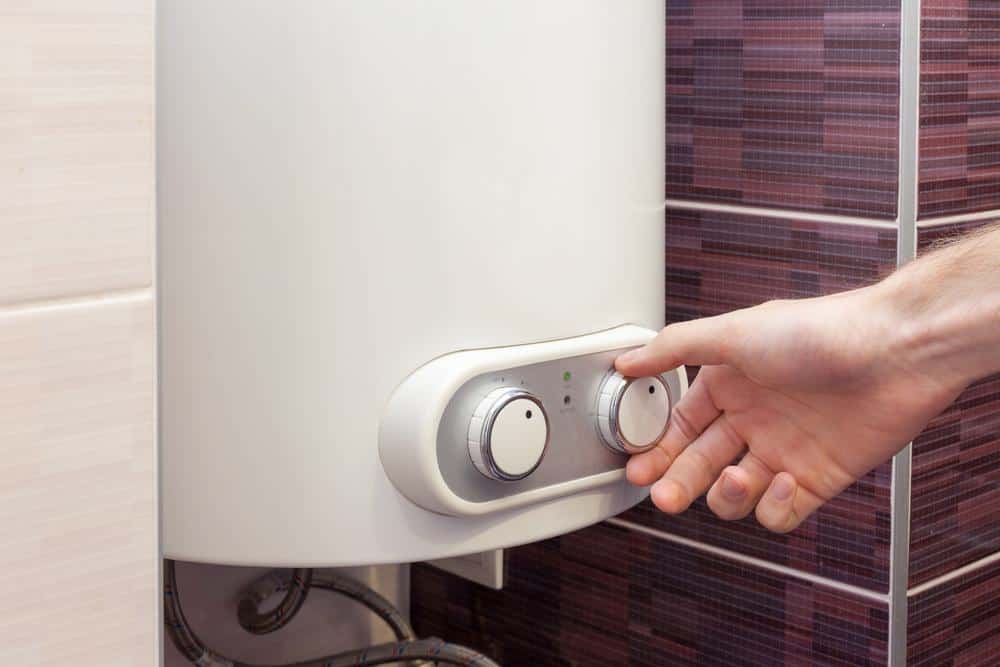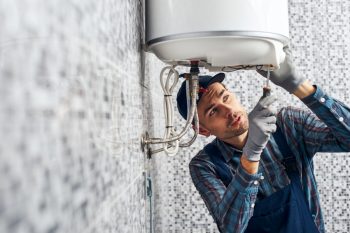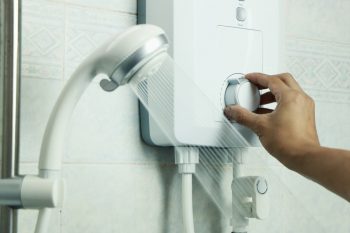
Ensuring your water heater is venting properly is not only crucial for the efficiency of the unit but also for the safety of your home. Improper venting can lead to serious health risks, including carbon monoxide poisoning. It can also cause damage to the water heater itself. In this comprehensive guide, we will walk you through how to determine if your water heater is venting properly.
To determine if your water heater is venting properly, look for signs of improper venting such as backdrafting, heavy condensation, melted plastic or corrosion, and burn marks. You can also inspect the venting system, check the vent connector, and test for backdrafting. If you notice any signs of improper venting or you’re unsure, it’s best to contact a professional to assess and fix the issue.
Understanding The Venting Process
Before we dive into the steps of inspecting your water heater, it’s essential to understand the venting process. In gas-powered water heaters, venting is necessary to remove exhaust gases produced during the combustion process. These gases need to be safely vented outside the property to prevent any health hazards or damage to your home.
There are several types of venting systems used in water heaters, including atmospheric venting, power venting, and direct venting. Each system has its own advantages and disadvantages, depending on factors such as installation space, energy efficiency, and the need for electrical power. To learn more about these systems, check out our guide on Types of Venting Systems for Water Heaters.
Signs of Poor Ventilation
How do you know if your water heater isn’t venting properly? Here are some common signs to look out for:
- Backdrafting: If you feel warm air or gas coming out of the unit, it may be backdrafting. This occurs when exhaust gases from the water heater spill out into the room instead of safely leaving the house through the vent.
- Heavy Condensation: A backdrafting water heater can cause excessive condensation on cold water pipes.
- Melted Plastic or Corrosion: These signs may indicate that exhaust gases are not being vented properly.
- Burn Marks: Burn marks at the bottom of the water heater tank can indicate improper venting, which can cause backdrafting.
If you notice any of these signs, contact a professional immediately to assess and fix the issue.
Checking Your Water Heater’s Ventilation
To check if your water heater is venting properly, follow these steps:
- Examine the Venting System: Physically inspect the venting system for any signs of improper installation, such as duct tape, galvanized steel, or overheated PVC.
- Check the Vent Connector: Ensure that the vent connector is properly installed, with a minimum slope of 1/4″ per foot, and no sags or dips.
- Test for Backdrafting: Place your hands close to the water heater’s draft hood. If you feel warm air coming out of the unit, it may be backdrafting.
- Inspect for Burn Marks: Look for burn marks on the bottom of your water heater. If you see burn marks, contact a professional to fix the venting issue.
- Check for Proper Vent Installation: Ensure that the vent is sloping upward and connects to a vent pipe running up through the roof.
- Consult the Instruction Manual: Read the instruction manual for your specific water heater model to understand the proper venting requirements.
Remember, if you suspect that your water heater is not venting properly or you are unsure about any of these steps, it is best to contact a professional to assess and fix the issue.
Professional Services for Water Heater Venting Issues
Professional plumbing contractors and HVAC technicians can inspect, diagnose, and repair venting problems, ensuring that your water heater operates safely and efficiently. When hiring a professional, make sure they are licensed, insured, and have experience with water heater venting systems.
Maintenance Tips
To ensure your water heater continues to vent properly over time, follow these maintenance tips:
- Clean the Venting System Annually: Remove the draft hood and flue baffle once a year and clean the venting system from debris.
- Inspect the Vent System: Check the vent piping regularly for any signs of damage or corrosion.
- Clean Lint from the Blower: Every 3-6 months, or as necessary, clean lint from the blower and the top of the heater.
- Maintain Clearance Around the Water Heater: Ensure there is adequate space around the water heater for proper ventilation.
- Schedule Professional Inspections: Have a professional hot water heater inspection at least once per year or after any maintenance that needs to be done.
By following these steps, you can ensure that your water heater is venting properly, operates safely, and maintains its efficiency. Always remember, when in doubt, seek professional help.
Frequently Asked Questions
What is the difference between atmospheric venting, power venting, and direct venting?
Atmospheric venting systems use natural draft to draw combustion gases out of the heater and into the atmosphere. Power venting systems use a fan to force gases out, and they can be vented horizontally, making them ideal for situations where a vertical venting system is not possible. Direct venting systems draw air from outside the home for combustion and then vent the combustion gases directly back outside.
What could cause my water heater to backdraft?
Several factors can cause a water heater to backdraft. These include a blocked vent, improper vent installation, negative air pressure in the house, or even a strong wind blowing down the chimney.
How often should I clean my water heater’s venting system?
It’s recommended to clean your water heater’s venting system at least once a year. However, this may vary depending on the type of water heater and the specific conditions in your home.
Can I fix a venting problem myself?
While it’s possible to fix minor issues, it’s generally safer and more effective to hire a professional. Improper venting can lead to dangerous situations, including carbon monoxide poisoning.
What should I look for in a professional to fix my water heater’s venting issues?
Look for a licensed and insured professional with experience in water heater venting systems. They should be able to provide references and should offer a warranty or guarantee on their work.












